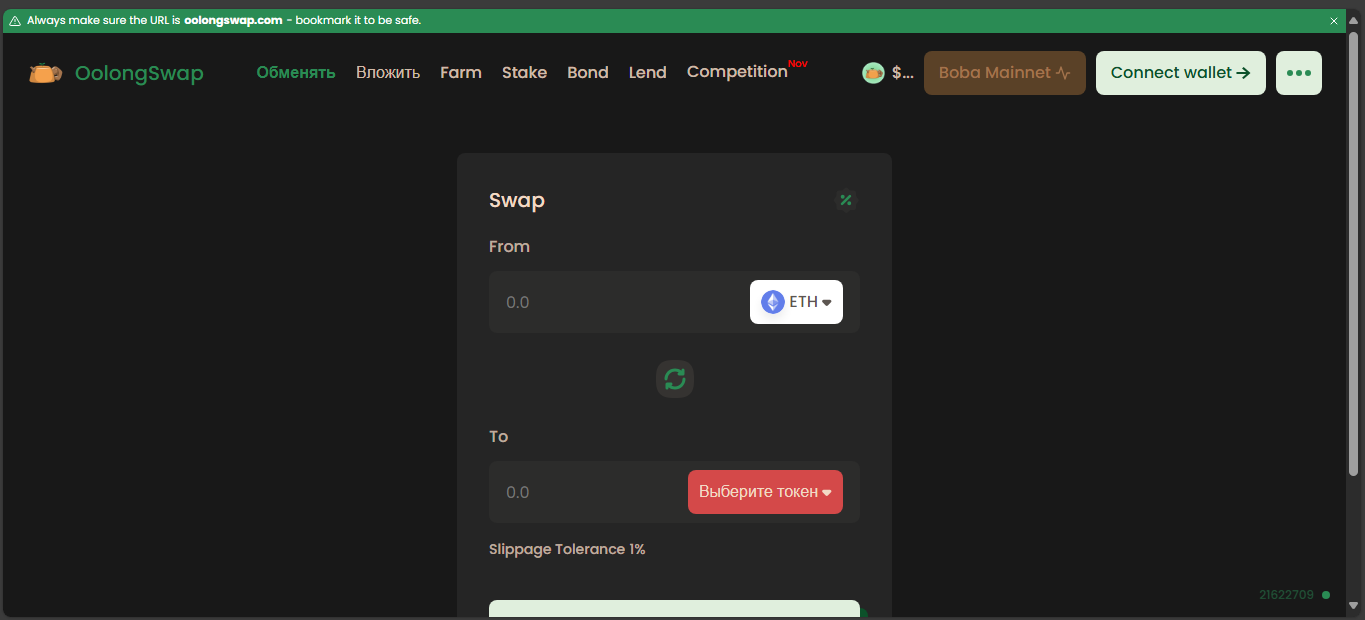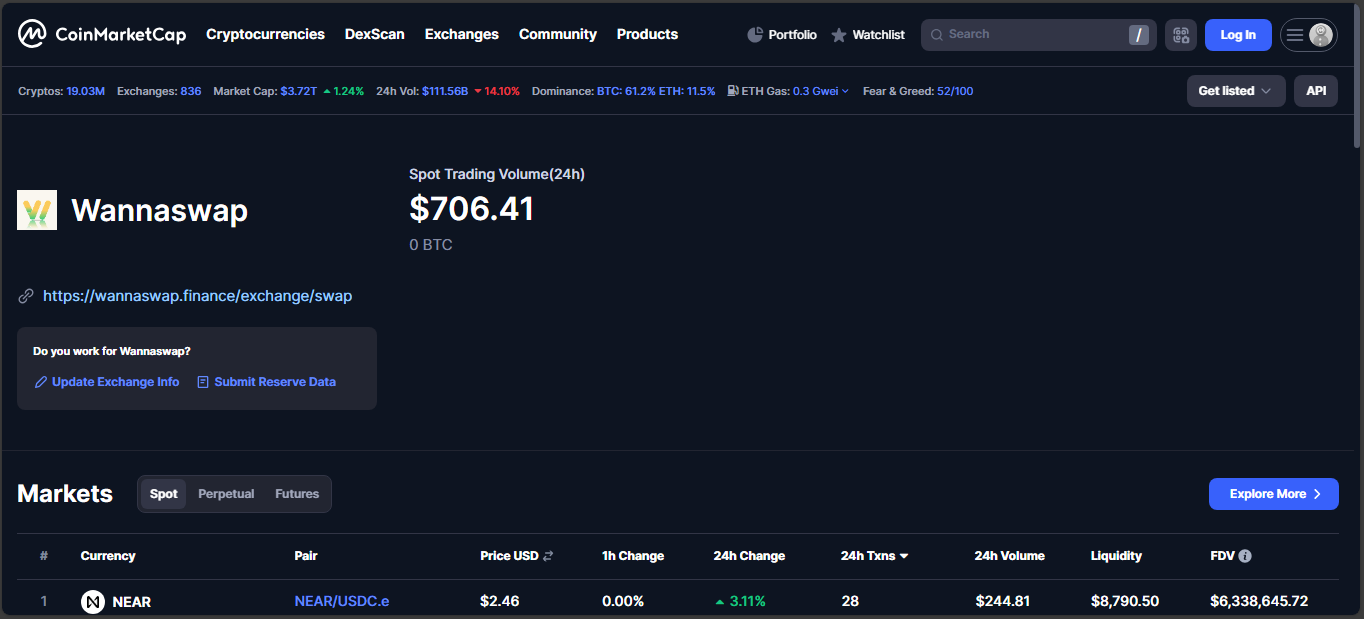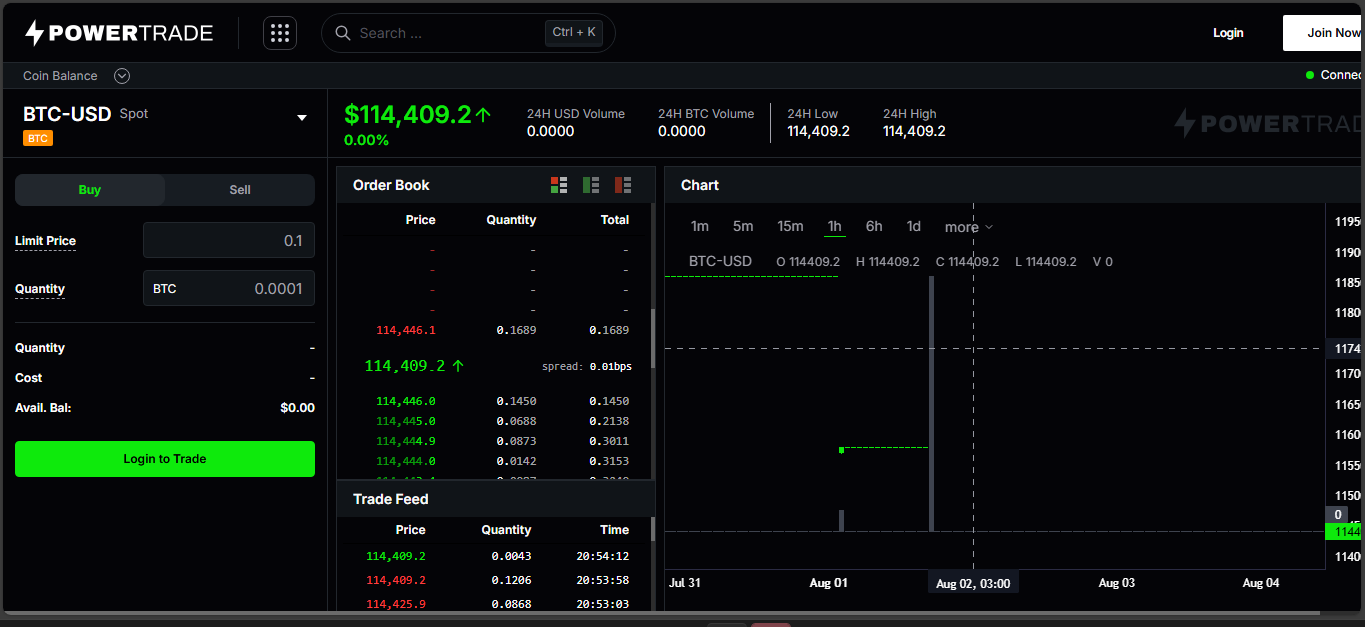ICO Rankings Blog
Discover a wealth of knowledge and stay up-to-date with the latest trends, news, and insights in the cryptocurrency and blockchain space through our blog.
Discover a wealth of knowledge and stay up-to-date with the latest trends, news, and insights in the cryptocurrency and blockchain space through our blog.
OolongSwap launched in 2021 as the first native AMM on Boba, positioning itself as a high-performance DEX for fast, low-fee token swaps. Its mission was to deliver more to earn and less to spend through dynamic pair fees, bonding mechanisms, and PCV-backed liquidity models.
At present, trading volume is zero. No active trading pairs remain, and on-chain data shows no recent transactions. Liquidity has completely dried up, leaving the platform non-functional.
The OLO token has lost nearly all value. Trading activity is absent, and the total value locked remains stagnant at a very low level, reflecting no meaningful user participation.
While the team once mentioned audits, no public reports exist. Ownership has not been renounced, and compliance measures are missing. Development has been inactive for a long time, with no signs of updates or maintenance.
Community engagement is nearly zero. The project lacks visibility, social media mentions are rare, and there are no user reviews or trust indicators. OolongSwap no longer holds any noticeable user base.
OolongSwap started as a promising AMM for the Boba ecosystem but has since become inactive. With no trading, no liquidity, and no active development, it appears abandoned rather than operational. Anyone considering interaction should treat it as high risk and proceed only with extreme caution.

DeDust is a decentralized AMM platform built natively on the TON blockchain, designed for efficient token swaps, liquidity provision, and user staking through its SCALE token.
Established in 2022 and originating from a Swiss-based team, DeDust aims to elevate DeFi on TON by combining low gas usage, scalability via sharding, and user-friendly interfaces accessible via web and Telegram Mini App. The protocol supports multi-hop swaps, stable pools, and promotes reward sharing through farming mechanisms.
Recent data shows daily trading volume between roughly 800K to 1.1 million USD, with over 80 coins and more than 160 trading pairs supported. The most active pair is typically USDT-TON, accounting for a large share of volume. Total value locked across the protocol reaches several million USD, indicating substantial usage and real liquidity in the pools.
The native token SCALE is central to governance and staking rewards. Users earn rewards by contributing liquidity and staking, with fees redistributed via protocol mechanisms. SCALE’s market cap and circulating supply are actively tracked, and tokenomics aim to ensure participation incentives.
DeDust claims audit processes are underway with security partners, but public reports remain limited. The team has shared development roadmaps, yet contract governance - such as ownership renouncement - is not fully documented.
User reviews on community platforms are scarce. Some early feedback praises the interface and swap speed, while others report delays in liquidity rewards or occasional bugs. The project maintains modest web traffic and a small but growing social following.
DeDust has rapidly evolved into one of TON’s primary DeFi venues, showing serious volume, liquidity, and technical features. Yet as a still-maturing protocol, it lacks full clarity in governance, security audits, and user trust signals. For TON-native users seeking DeFi access, DeDust is a high-activity option. For others, careful vetting is recommended before committing funds.

EchoDEX popped up in 2023 on the Linea network - basically a DEX and liquidity aggregator. It lets users trade and earn ECP tokens by swapping, staking or farming. Volume? Practically invisible. CoinMarketCap lists it as untracked, so no real usage data.
The setup looked neat: basic interface, support for a couple of trading pairs, rewards for holding ECP. CoinGecko shows just two coins and two pairs, with under $250 in 24-hour volume. Trust score sits low in the percentile range.
Site trust rating is extremely low. Scam checkers flag the domain with warnings about hidden ownership and low traffic. No audits, no published reserve data, no visible governance or compliance.
EchoDEX may still be alive technically, but it’s worse than inactive. Tracking dropped, liquidity is virtually zero, and support channels are silent.
There doesn’t seem to be a user base to speak of. No public reviews, forums are quiet, and no visible community posts. It’s basically a name in databases, not a functioning platform used by real traders.
As of mid-2025, EchoDEX is hardly active. Trading volume hovers near zero, listed tokens are few, and most aggregators don’t retrieve up-to-date stats.
Domain trust is low, traffic minimal, ownership obscured - maybe a testnet project that never scaled.
EchoDEX started as another DeFi experiment on Linea - fast swaps, staking, small token rewards. But by 2025 it’s barely a blip. No liquidity, no audits, no trust. It’s more of a ghost than a working exchange.
If you stumble on it, treat it with skepticism. DeFi tools need transparency - if the trust score is low and volume is nothing, you're better off steering clear. EchoDEX serves as a reminder: small, untracked protocols may vanish quietly, taking any deposits with them.

WannaSwap launched in 2021 with a splash - Aurora-based DEX, native WANNA token, farming and referral rewards. The NEAR Foundation even backed it early. But hype faded fast. By mid-2025 trading volume sits around $1,000 per day or less, and traffic is nearly invisible.
At first it looked like a neat spot - swap tokens, stake WANNA, earn rewards. Fees low, simple UI. But listing shows only around five coins and ten trading pairs. Volume dropped off. No community chatter, no posts, nothing much happens there anymore.
Trust ratings? Very low. Domain traffic minimal, audits missing, ownership unclear. No reserve data. Liquidity is tiny - slippage high, trades don’t go through nicely unless you’re trading cents. DEX market needs transparency - WannaSwap had none.
There’s almost no user reviews. Forums are silent. Crypto watchers barely mention it. It exists largely as a name in a database - not a place where real trades take place anymore.
By 2025, it’s basically dormant. Volume stays in the low hundreds a day, listings unchanged, and no new pairs or updates. Most aggregators treat it as negligible, untracked. The site still exists, but it feels abandoned.
Biki once looked like a solid Singapore exchange with global aspirations, a token economy, and staking. But that ambition didn’t last. Now it’s essentially deactivated - UI still runs, but the market left. It’s like an empty showroom - lights on, cars displayed, but nobody drives them.

FutureSwap is a decentralized perpetuals trading platform built on Ethereum and Arbitrum, offering up to 30x leverage and its native FST token. It launched with flair, promising leveraged trading on any ERC-20 pair, liquidity pools, staking rewards, community governance. Built on rolling tech, backed by some audit firms. But in practice? It’s been sluggish, barely used. According to aggregators it’s listed as untracked and reserve data is missing.
Volume numbers are modest - market cap under $70K, daily volume around $65K, TVL about $1.1 million. That’s not nothing, but nowhere near active. Circulating supply sits at about 34–35 million FST coins of a 100 million cap.
It boasts audits from Trail of Bits and OpenZeppelin, yet no proofs of reserves appear on public dashboards. Domain traffic is light. Governance talk exists, but actual community voice is near silent. Trading pairs are limited, slippage reports surface when you trade even mid-small amounts.
Few real traders seem involved. No active forum threads, little discussion on Telegram or Discord. That level of invisibility usually means little real usage.
Volume has stalled. FST trades infrequently. Governance proposals happen maybe once in a while, but overall participation is low. No big updates or new feature launches. Most aggregators almost skip FutureSwap due to minimal activity.
Great vision, shaky execution. Allowed trading any ERC-20 pair with leverage - but without adequate liquidity or user base, execution glitches happen and risk piles up. Leverage platforms need trust and scale, and it never reached either.
Mostly an echo: token listings, dormant pools, outdated governance snapshots. No major hacks or scandals - just fading interest and minimal liquidity. Company presence is sparse.
FutureSwap marketed itself as the leverage playground for Ethereum traders - democratized, community-governed, trust minimized. But real-world usage never matched the hype. Without liquidity or a strong user base, the idea stalled.
If you see FST tokens in the wild, treat the platform like a dusty experiment rather than a reliable option. In a sector where leverage and losses go hand in hand, you need transparency. FutureSwap had ambitions - but in crypto, ambition without users and reserves is just vapor.

PowerTrade rolled out claiming to offer an easy way to trade options on 80+ altcoins across a centralized exchange and a non-custodial DEX variant (PowerDeX). The idea: tighter spreads, fast execution, mobile/web access, staking via PTF tokens - all appealing on paper.
Volume hasn’t kept pace though - daily trading volume for the PTF token sits around $50K, market cap near half-a-million, and only moderate TVL in smart contracts. CoinMarketCap flags the exchange but shows almost no reserve data or reliable metrics.
Audits are mentioned and some protection pools exist, but there’s no transparency on reserve data or consistent proof of liquidity. Traffic stats are minimal - similar websites show under 3.5K visits monthly, with low engagement, which doesn’t breed confidence. Community interaction is thin too, with sparse updates or forum presence.
If you’re trading small amounts, maybe you’ll get a decent fill. But larger trades face slippage, and governance proposals appear only occasionally. Without a vibrant user base or open feedback loops, it can feel like using an experimental project more than a live platform.
PowerTrade’s infrastructure still runs. The token PTF trades, staking persists, and a growing altcoin-options catalog exists. They added xStock contracts recently with shorter expiries and cross-chain availability via Solana, Base and Ethereum. But volume and trust metrics remain tepid - it’s not widely used enough to count as reliable.
The vision is broad, but execution lacks scale. Deep altcoin coverage won’t substitute for liquidity. Options markets need both volume and trust to work - and PowerTrade has struggled to build either fully.
PowerTrade pitched itself as the go-to platform for altcoin options with both centralized execution and decentralized control. It did innovate - staking rewards, fast expiry contracts, tokenized stock options. But by 2025, it still hasn’t broken through. If you’re curious and willing to risk small amounts, fine. But if you're searching for deep liquidity, solid trust, and active community - this is still mid-tier.
In crypto, even good tools must earn volume and transparency. PowerTrade has promise, but without scale and openness, it skates by quietly rather than leading the market.
